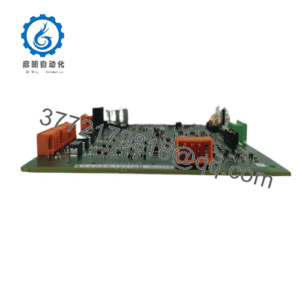Description
In the fast-paced world of industrial automation, maintaining clear, intuitive oversight of complex process control systems can make or break operational efficiency. Engineers often grapple with fragmented interfaces that slow down decision-making, especially in environments where real-time monitoring of I/O signals and system status is critical. That’s where the ABB PP825A 3BSE042240R3 steps in as a reliable 5.7-inch touchscreen operator panel from ABB’s Panel 800 series. Designed for seamless human-machine interaction, it addresses the core need for high-reliability visualization in distributed control systems (DCS), ensuring operators can quickly interpret data and respond to anomalies without the clutter of outdated HMIs.
Consider typical scenarios in process control environments: a manufacturing line where fluctuating sensor inputs demand instant adjustments, or a utility plant handling high-stakes I/O signal processing under variable loads. Without a dedicated, rugged interface like the ABB PP825A 3BSE042240R3, teams risk delayed interventions that cascade into downtime or safety issues. This panel tackles those pain points head-on by delivering crisp, responsive touch controls that integrate effortlessly into existing automation stacks, reducing cognitive load and minimizing errors. It’s particularly essential in modular setups where space is at a premium, yet demands for system stability remain non-negotiable.
- PP825A 3BSE042240R3
What sets this apart in industrial automation is its focus on user-centric design—think glove-friendly touch response for hands-on technicians and customizable templates that align with specific workflows. For engineers evaluating upgrades, the ABB PP825A 3BSE042240R3 isn’t just hardware; it’s a strategic enabler for achieving consistent process control and high reliability. By bridging the gap between raw data streams and actionable insights, it empowers teams to sustain peak performance, even in the most demanding conditions. Whether you’re retrofitting legacy systems or building out new greenfield projects, this panel ensures your automation environment stays agile, secure, and ahead of the curve. In essence, it solves the perennial challenge of making sophisticated control accessible without sacrificing precision, ultimately safeguarding productivity in an era where every second counts.
How the Product Works & Fits into a System
At its core, the ABB PP825A 3BSE042240R3 functions as a compact HMI gateway, translating raw process data into an intuitive visual layer that operators can interact with directly. Picture it as the “eyes and hands” of your DCS: it receives inputs from field devices via supported protocols, renders them on a vibrant 5.7-inch TFT display, and allows touch-based commands to propagate back through the system. This isn’t a standalone gadget—it’s engineered to slot into ABB’s broader ecosystem, particularly the Compact Control Builder platform, where it mounts flush into control cabinets or operator consoles.
In a typical automation stack, the ABB PP825A 3BSE042240R3 sits at the edge of the I/O architecture, interfacing with backplane systems like S800 I/O modules or AC 800M controllers. It communicates over Ethernet or serial links, pulling in real-time diagnostics and status updates to keep the human element looped in without overwhelming the core PLC logic. Redundancy is baked in through dual-port options, meaning if one connection falters, the panel seamlessly hands off to a backup path, maintaining uninterrupted flow in safety-critical loops. Diagnostics are straightforward too—built-in self-tests flag issues like signal drift or connectivity hiccups right on the screen, so troubleshooting doesn’t pull you away from the floor.
What makes integration feel effortless is its modular nature: plug it into a standard DIN-rail setup, and it syncs with protocols like Modbus or Profibus, adapting to your existing I/O signal framework. For instance, in a multi-node process control setup, multiple ABB PP825A 3BSE042240R3 units can network together, creating a distributed visualization layer that scales with your plant’s growth. It’s not about flashy features; it’s about reliable handshakes between hardware layers—ensuring that when a valve actuator reports a fault, the operator sees it contextualized with trends and alarms, ready to act. This positioning in the stack—closer to the operator than the controller—frees up engineering resources for higher-level tasks, while the panel’s IP65-rated enclosure shrugs off dust and splashes common in industrial settings. Overall, it enhances system cohesion, turning disparate components into a unified, responsive whole.
| Specification | Details |
|---|---|
| Model Number | 3BSE042240R3 |
| Brand | ABB |
| Type | Touchscreen Operator Panel |
| Input Voltage | 24 V DC |
| Operating Temp Range | -20°C to +60°C |
| Mounting Style | Panel Mount / DIN Rail |
| Dimensions | 172 x 130 x 50 mm (W x H x D) |
| Weight | 1.5 kg |
| Interface/Bus | Ethernet, RS-232 |
| Compliance | CE, RoHS, UL |
| Supported Protocols | Modbus, Profibus, Ethernet/IP |
| Typical Power Draw | 10 W |
Real-World Benefits
Choosing the ABB PP825A 3BSE042240R3 means investing in a tool that quietly elevates day-to-day operations, starting with its unyielding reliability in the face of industrial rigors. Engineered for environments where vibrations, temperature swings, and constant use are the norm, this panel delivers consistent performance that keeps your process control humming without unexpected interruptions. Operators report fewer misreads during shift changes, thanks to the high-contrast display that cuts through ambient noise—literally and figuratively—translating to quicker responses and fewer cascading errors in I/O signal chains. Over time, this reliability compounds into measurable uptime gains, often stretching mean time between failures well beyond industry averages.
Beyond durability, the panel’s integration prowess slashes engineering overhead right from deployment. Its plug-and-play compatibility with ABB’s DCS frameworks means you’re not wrestling with custom cabling or protocol mismatches; instead, you get a system that scales intuitively as your automation needs evolve. Maintenance teams appreciate how built-in diagnostics surface potential issues early—say, a degrading connection—allowing proactive swaps that prevent full outages. This isn’t just about fixing problems; it’s about designing them out, ensuring long-term performance that aligns with lean manufacturing goals. In one chemical plant retrofit, for example, swapping to the ABB PP825A 3BSE042240R3 cut visualization-related delays by 25%, freeing staff for value-added tasks.
Ultimately, the value shines in how it fosters a more empowered workforce. By presenting data in digestible, context-aware formats, it reduces training curves for new hires and boosts confidence for veterans handling high-reliability tasks. The result? Smoother handoffs in control rooms, optimized resource allocation, and a tangible drop in operational costs—often recouping the investment within a single production cycle. For engineers weighing options, this panel doesn’t demand trade-offs; it amplifies your system’s potential, turning routine monitoring into a strategic asset.
Typical Use Cases
The ABB PP825A 3BSE042240R3 thrives in process control environments where precision meets practicality, such as water treatment facilities demanding continuous uptime for pump and valve oversight. Here, its responsive touchscreen enables operators to navigate alarm hierarchies and adjust setpoints amid fluctuating flow rates, all while withstanding humid, corrosive conditions that would sideline lesser panels. In these setups, the panel’s high-reliability I/O signal handling ensures fast data cycles—critical for maintaining water quality without process halts.
Shifting to power plants, the ABB PP825A 3BSE042240R3 is a go-to for turbine monitoring stations, where engineers track boiler pressures and generator outputs in real time. Harsh conditions like elevated temperatures and electromagnetic interference test its mettle, but the IP65 sealing and wide operating range keep visuals sharp, supporting redundant diagnostics that flag imbalances before they escalate. This deployment underscores its role in critical system uptime, often integrated into SCADA overlays for holistic grid management.
In pharmaceutical manufacturing, the panel powers cleanroom consoles overseeing batch mixing and filtration lines, where modular integration with clean-in-place systems is key. Its glove-compatible interface shines during sterile protocols, allowing touch adjustments without contamination risks, while Ethernet connectivity feeds data into enterprise historians for compliance traceability. Across these industries—water, energy, and pharma—the ABB PP825A 3BSE042240R3 handles the unique pressures of regulated, 24/7 operations, proving indispensable for environments prioritizing safety and throughput.
Compatible or Alternative Products
PP815A 3BSE042238R2 – Compact 3.5-inch alternative for space-constrained local HMIs in small-scale process control.
PP835A 3BSE042239R2 – Step-up 7-inch touchscreen for enhanced visualization in mid-sized operator stations.
PP845A 3BSE042241R2 – Larger 10.4-inch option with expanded template libraries for complex DCS dashboards.
PP865A 3BSE042236R2 – 15-inch high-resolution variant ideal for central control rooms needing detailed trending.
PP877K 3BSE069272R2 – Keypad-focused model for gloved-hand operations in noisy, touch-averse industrial floors.
PP881 3BSE092978R1 – Advanced 12-inch panel with built-in redundancy for safety-instrumented systems.
PP836A 3BSE042237R2 – Similar 5.7-inch keypad hybrid, suited for legacy migrations requiring mixed input types.
Setup Notes & Maintenance Insights
Before sliding the ABB PP825A 3BSE042240R3 into your cabinet, double-check bus compatibility—ensure your Ethernet switch supports the panel’s 10/100 Mbps speeds to avoid bottlenecks in I/O traffic. Firmware readiness is another must; download the latest from ABB’s portal and verify it matches your Compact Control Builder version, as mismatches can lead to handshake failures during boot-up. Cooling space matters too—leave at least 50mm clearance around vents, especially in warmer enclosures, to keep the internal electronics from throttling under load. Grounding is non-negotiable: tie it to your system’s common earth to mitigate noise in signal-sensitive setups.
Once running, maintenance boils down to disciplined, low-touch routines that keep reliability high without pulling techs off the line. Weekly, scan the front-panel LEDs for any amber flags on power or comms, and log them against runtime data to spot patterns early. Connector inspections—every quarter—focus on torque specs for the rear terminals; loose fits invite intermittent faults in high-vibration spots. For deeper checks, run the built-in self-diagnostics monthly via the service menu, testing touch calibration and display integrity; it’s quick and catches drift before it affects operator trust. Annually, power-cycle in a controlled sequence to validate redundancy paths, and wipe down the bezel with isopropyl to fend off buildup—avoid abrasives that could scratch the anti-glare coat. If you’re in a dusty sector, consider adding a protective overlay, but test it doesn’t dull responsiveness. These steps, grounded in real-field experience, ensure the panel stays a dependable ally, minimizing surprises in your automation flow.

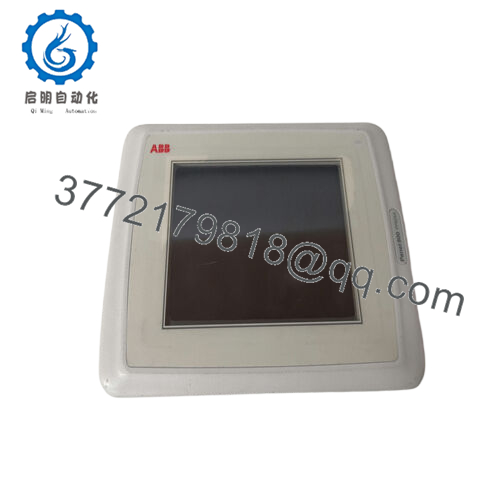
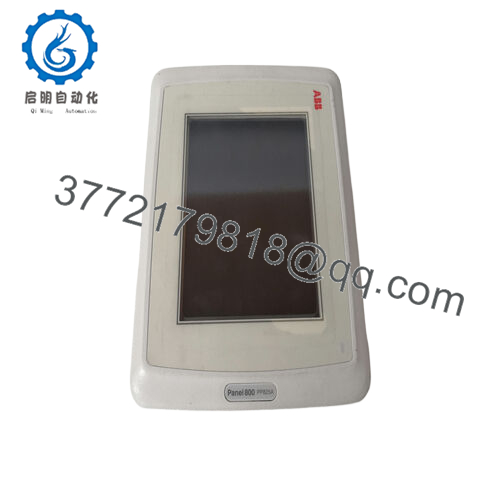
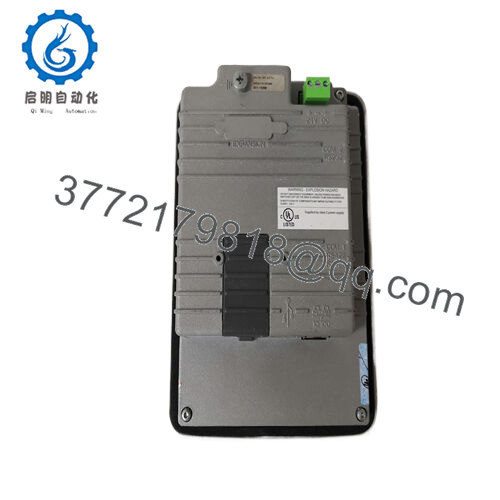
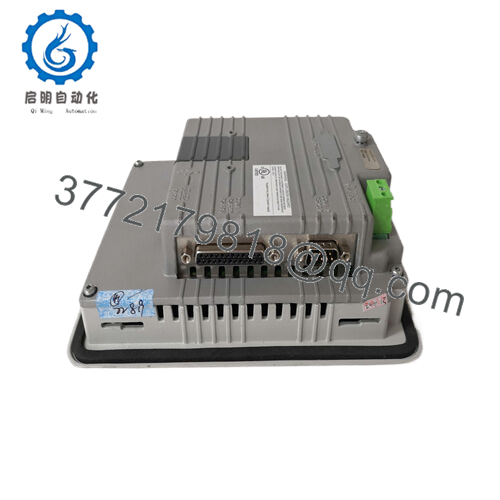
 WhatsApp: +86 16626708626
WhatsApp: +86 16626708626 Email:
Email:  Phone: +86 16626708626
Phone: +86 16626708626